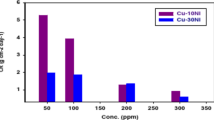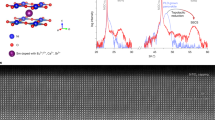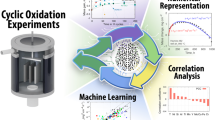Abstract
Wagner and Levin1 have recently shown that metallic copper separates within the oxide scale formed on a 68/32 cupro-nickel alloy at 850° C. They considered that this was due to a reduction of cuprous oxide by nickel diffusing outward from the parent alloy. In some recent experiments, designed to investigate the oxidation characteristics of a range of cupro-nickel alloys in high-pressure steam, the authors have observed bands of copper in oxide scales formed on specimens oxidized at 275° C. It is our opinion that, at this low temperature, diffusion processes alone could not account for the isolation of such large masses of copper (Fig. 1).
This is a preview of subscription content, access via your institution
Access options
Subscribe to this journal
Receive 51 print issues and online access
$199.00 per year
only $3.90 per issue
Buy this article
- Purchase on SpringerLink
- Instant access to full article PDF
Prices may be subject to local taxes which are calculated during checkout
Similar content being viewed by others
References
Levin, R. L., and Wagner, jun., J. B., J. Electrochem. Soc., 108, 954 (1961).
Masterson, H. G., and Evans, G. E., Proc. First Intern. Cong. Metallic Corrosion, London (1961).
Blade, J. C., and Preece, A., J. Inst. Met., 88, 427 (1960).
Author information
Authors and Affiliations
Rights and permissions
About this article
Cite this article
CASTLE, J., HARRISON, J. & MASTERSON, H. Oxidation of Cupro-Nickel Alloys in Steam–Oxygen Mixtures. Nature 196, 261–262 (1962). https://doi.org/10.1038/196261a0
Issue date:
DOI: https://doi.org/10.1038/196261a0



